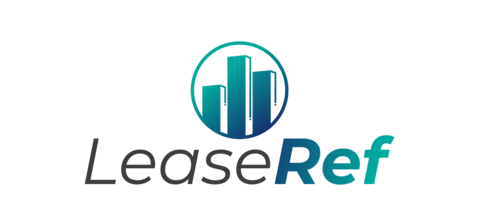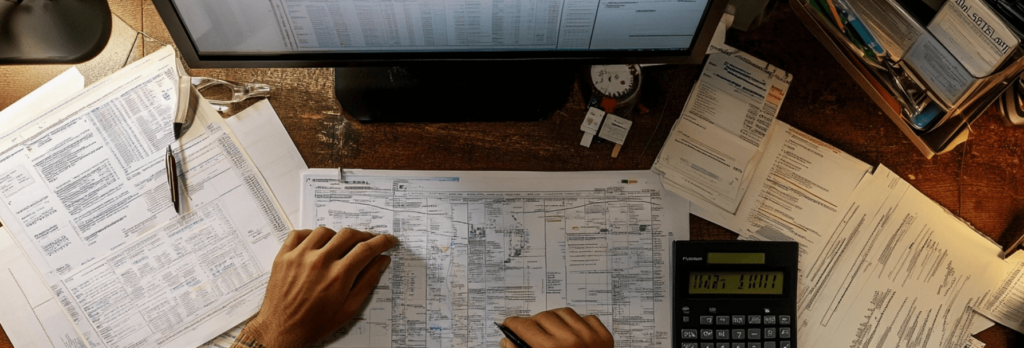For commercial real estate investors and asset managers, integrating solar energy systems is a strategic move to cut operational costs and boost property values. Yet, the performance and longevity rely on diligent preventative maintenance of the solar panels, as well as being quick about fixes for common issues that come up.
1. Dust and Debris Accumulation
Issue: Solar panels are highly susceptible to efficiency losses when covered by dust, leaves, and other debris. Research indicates that solar panel efficiency can decrease by up to 25% without regular cleaning. Multiplied by many panels, or even many commercial buildings, the losses can add up massively.
Fix: Establishing a routine cleaning schedule is paramount. For ground-mounted systems, soft brushes and mild soapy water can be used, while rooftop installations might benefit from professional cleaning services equipped to handle the task safely and effectively. For large-scale installations, investing in automated cleaning technology can ensure consistent cleanliness without the labor costs associated with manual cleaning of the panels. Additionally, applying a protective coating to the panels can repel dust and dirt, reducing the frequency of required cleanings.
2. Water Damage and Corrosion
Issue: In coastal areas or regions with high humidity, solar panels and their components are at risk of corrosion and water damage. This not only affects the system’s efficiency but can also lead to safety hazards. The National Renewable Energy Laboratory (NREL) suggests that corrosion can reduce solar panel output by up to 0.5% per year, compounding the loss of efficiency over time.
Fix: Utilizing corrosion-resistant materials for all exposed components is critical, especially in environments prone to saltwater exposure or high humidity. For example, this will be different for the area of Denver vs the Fort Myers solar markets. Ensuring that panel enclosures and junction boxes are properly sealed against moisture ingress is another vital step. Regular inspections can catch early signs of corrosion or water damage, allowing for repairs or replacements. For installations in particularly vulnerable locations, consider additional protective measures like elevated mounts or protective barriers to shield components from direct exposure to corrosive elements.
3. Micro-Cracks in Solar Panels
Issue: Micro-cracks in solar panels can significantly impact their efficiency and longevity. These tiny fractures, often invisible to the naked eye, can be caused by physical stress during installation, temperature fluctuations, or hail impact. A study by Solar Edge cites using hailstorm damage to measure power outputs before and immediately after. They found that each panel was experiencing a 2% – 4% decrease in power output.
Fix: Preventing micro-cracks begins with careful handling and installation of solar panels. Using high-quality panels designed to withstand environmental stresses is also crucial. For existing installations, thermal imaging can be employed to detect micro-cracks early. In some cases, applying a sealant or replacing the affected panels might be necessary to restore system efficiency. Regular inspections, especially after severe weather events, can help identify and mitigate the impact of micro-cracks.
4. Inverter Failures
Issue: Inverters are pivotal for converting the DC electricity generated by solar panels into AC electricity usable by commercial buildings. However, they are also one of the most common points of failure in a solar system. Inverter failures can account for significant downtime and loss of energy production.
Fix: To minimize the risk of inverter failures, it’s essential to choose high-quality inverters with a strong warranty and to install them in locations that minimize exposure to extreme temperatures and moisture. Implementing a regular maintenance schedule that includes inverter checks can help identify potential issues before they lead to failure. Additionally, installing a monitoring system can alert managers to performance issues in real-time.
5. Shading and Obstructions
Issue: Shading from new constructions, growing trees, or accumulated debris can significantly reduce the energy output of solar panels. Even partial shading can lead to disproportionate losses in power generation. A study highlighted that shading as little as 10% of a solar panel can reduce its efficiency by up to 50%, depending on the panel’s configuration and the type of shading.
Fix: Regular site assessments are crucial to identify potential shading issues before they impact system performance. Strategic placement of panels during the initial design phase can mitigate future shading risks. For existing installations, solutions may include trimming or removing trees and other vegetation that cause shading or relocating panels to a more optimal position. In some cases, technological solutions like microinverters or power optimizers can help minimize the impact of shading on panel efficiency.
6. Wiring and Connection Issues
Issue: Faulty wiring and loose connections can lead to significant efficiency losses and even pose fire hazards. Over time, connections can loosen due to thermal expansion and contraction, and wiring insulation can degrade under environmental exposure. These issues can disrupt the flow of electricity and reduce the overall performance of the solar system.
Fix: Conducting regular electrical inspections is key to identifying and addressing wiring and connection issues. High-quality wiring materials and secure, weatherproof connections are essential for minimizing degradation and disconnections. Implementing routine maintenance checks allows for the early detection of potential problems, ensuring that wiring and connections remain in optimal condition for safe and efficient system operation.
7. Degradation of Solar Panels
Issue: All solar panels degrade over time, losing efficiency and output capacity. This natural degradation process is influenced by factors such as UV exposure, thermal cycling, and moisture. On average, solar panels degrade at a rate of about 0.5% to 1% per year (see study above), although this can vary based on the panel type and environmental conditions.
Fix: While degradation is inevitable, selecting high-quality panels with lower degradation rates can help maintain higher levels of efficiency over the system’s lifespan. Regular performance monitoring can identify panels that are degrading faster than expected, allowing for targeted maintenance or replacement. Additionally, considering panel replacement or system augmentation as part of long-term maintenance planning can ensure continued optimal performance.
8. Snail Trails
Issue: Snail trails are distinctive visual markings that appear as dark lines or patterns on the surface of solar panels, reminiscent of the trail left by a snail. These markings are typically the result of micro-cracks in the solar cells, which allow moisture and oxygen to penetrate and cause oxidation, particularly around the metal contacts within the cells. While snail trails primarily affect the panel’s appearance, they can also indicate underlying damage that may impact the panel’s efficiency and longevity.
Fix: Firstly, choosing solar panels from reputable manufacturers with stringent quality control measures can reduce the risk of defects that lead to snail trails. For existing installations, it’s important to conduct regular inspections, especially after extreme weather events, to identify any signs of snail trails early. If panels are found to have snail trails, assessing the extent of the damage is crucial; minor aesthetic issues may not require immediate action, but significant efficiency losses might necessitate panel repair or replacement.
Stay Prepared!
While common commercial solar maintenance issues like dust accumulation are manageable, it’s the unexpected challenges like snail trails that truly test a system’s resilience. A commitment to regular maintenance and quality installations from the outset can ensure your solar investment remains robust and efficient, delivering clean energy and cost savings for years to come.



